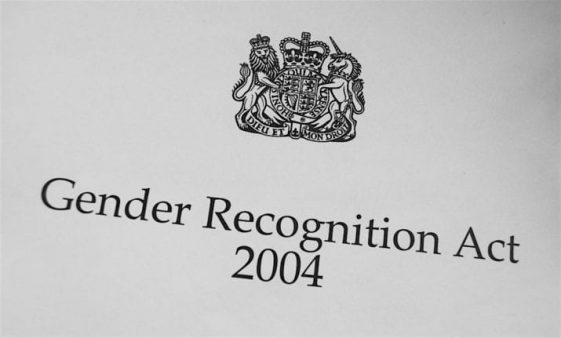On “Choosing Reality”: How Public Discussions of Gender Recognition Go Wrong, and What We Can Do About It Part 3. Beyond the Ontology-First Approach
7 March 2022
Content advice: transphobia.
In the previous post, I argued that we should reject the Ontology-First Approach, which is the view that questions about gender recognition should be settled by first establishing what gender really is. This raises the question of how we should approach discussions of gender recognition. In this post I will suggest that we should re-frame such discussions as primarily practical and ethical rather than primarily ontological. Whereas the Ontology-First Approach directs us towards trying to work out who really is a member of which gender category, we should, in my view, focus instead on establishing the consequences of adopting one or another sort of social practices, and on assessing the extent to which these consequences are morally acceptable.
I will illustrate this approach in more detail by considering the example of gender-separated toilets. The Ontology-First Approach involves framing the issue in terms of “figuring out who is really a woman”, and this is often how it is in fact discussed. On the alternative approach I am suggesting, toilet access would be conceptually de-linked from questions about what gender is, meaning that these sorts of considerations would be ruled out from the start. Instead, we would proceed by considering the consequences of different possibilities: what happens if trans people are able to use the gender-differentiated toilets that most closely match their gender identity, and what happens if they are not? (A more thorough exploration would also consider alternative ways of providing toilet spaces – such as individual, self-contained, non-gendered toilets – but I am restricting my focus to these two options for reasons of space.)
The current situation in the UK, the US, and many other countries gives us insight into both of these possibilities. This is because many trans people do use gendered toilets that match their gender identity, but they also encounter significant barriers to doing so. These barriers are not typically legal in nature – in the UK, for example, excluding trans women from women’s toilets would be illegal under the Equality Act 2010 – but rather take the form of informal hostile responses including verbal harassment and physical assault. These risks generate stress, and – given that a trans person may be perceived as out of place in a gendered toilet of either kind – effectively prevent some people from using public toilets at all. This in turn prevents them from accessing a wide range of public spaces, and depending on people’s circumstances, it may severely limit their ability to leave their home at all.
These negative effects of excluding trans people from the toilets that match their gender identity are widespread and well documented. The report of the 2015 US Transgender Survey, which surveyed over 27,000 trans people, found that in the preceding year, 24% of respondents had been questioned or challenged over their presence in a toilet, 12% had been verbally harassed, physically attacked, or sexually assaulted when accessing or using a toilet in the past year, and 9% had been denied access to a toilet in the past year. More than half (59%) had avoided using a public toilet due to fear of such problems – either sometimes (48%) or always (11%) – and, related to this, almost a third (32%) limited the amount they ate or drank to avoid using the toilet, while 8% reported having a urinary tract infection, kidney infection, or another kidney-related problem, as a result of avoiding toilets.
It is clear, then, that trans-exclusionary approaches to toilet access seriously undermine trans people’s safety, dignity, and ability to participate in society. These are very severe harms. One might think they are so severe that they could never be morally acceptable. At minimum, they could only reasonably be considered to be morally acceptable if alternative arrangements involved even more extreme and widespread risks.
But there is no reason to think that enabling trans people to use the toilets that they feel most comfortable with carries any risks at all, much less extreme and widespread risks. Peer-reviewed studies have found no evidence that trans-inclusive policies lead to a rise in sexual offences, nor to safety and privacy violations more broadly.
One point that is sometimes raised against trans-inclusive toilet arrangements is the discomfort some cis women may feel at sharing a toilet space with a trans women. But such discomfort, even if it were widespread, could not reasonably be viewed as outweighing the harms associated with the trans-exclusionary arrangements that are detailed above.
Moreover, I think we should question whether those who appeal to such discomfort would be willing to apply the same logic to other cases where some people using a facility feel discomfort towards other people using that facility. I think that few would be willing to treat some white women’s discomfort at sharing spaces with women of colour, or some straight women’s discomfort at sharing spaces with queer women (for example), as a reason – even a potentially outweigh-able reason – to exclude women of colour or queer women from women’s toilets.
A possible response here would be to claim that such discomfort could only be founded on prejudice, whereas discomfort experienced by cis women in relation to trans women is a response to genuine risks to safety; thus, the two cases are different. This, however, would return us to the assessment of safety risks discussed above – which shows that there is no such risk.
Overall, this shows that on the approach I am advocating, the question of how to organise access to gender-differentiated toilets has a very obvious answer: people should be able to use the toilet that best fits their gender identity (assuming that toilet spaces are gendered in the first place).
Now, I’m not suggesting that all decisions about how to organise gendered social practices have equally straightforward resolutions. The point, rather, is twofold.
Firstly, once we approach questions of gender recognition with a focus on practical and ethical considerations, we will see that questions about different social practices should be handled separately from one another. For example, sporting competitions are, as the name indicates, competitive; but going to the toilet is usually not a competitive matter (there may be occasional exceptions, for example in the case of very small children). Arranging a social practice that is competitive raises different practical and ethical issues compared to arranging one that is not. So the question of how to handle gender recognition in the case of sporting competitions should be treated as separate from the question of how to handle gender recognition in the case of toilets.
Secondly, as the foregoing discussion of toilet access has shown, it is much easier to point to evidence about the practical effects of different policies for a given question about gender recognition than it is to answer ontological or metaphysical questions such as ‘what makes someone a woman?’. Getting away from the Ontology-First Approach won’t solve all the problems currently affecting public discussions of gender recognition – but it will be a step in the right direction.
- July 2024
- June 2024
- May 2024
- April 2024
- March 2024
- February 2024
- January 2024
- December 2023
- November 2023
- October 2023
- September 2023
- August 2023
- July 2023
- June 2023
- May 2023
- April 2023
- March 2023
- February 2023
- January 2023
- December 2022
- November 2022
- October 2022
- September 2022
- August 2022
- July 2022
- June 2022
- May 2022
- April 2022
- March 2022
- February 2022
- January 2022
- December 2021
- November 2021
- October 2021
- September 2021
- August 2021
- July 2021
- June 2021
- May 2021
- April 2021
- March 2021
- February 2021
- January 2021
- December 2020
- November 2020
- October 2020
- September 2020
- August 2020
- July 2020
- June 2020
- May 2020
- April 2020
- March 2020
- February 2020
- January 2020
- December 2019
- November 2019
- October 2019
- September 2019
- August 2019
- July 2019
- June 2019
- May 2019
- April 2019
- March 2019
- February 2019
- January 2019
- December 2018
- November 2018
- October 2018
- September 2018
- August 2018
- July 2018
- June 2018
- May 2018
- April 2018
- March 2018
- February 2018
- January 2018
- December 2017
- November 2017
- October 2017
- September 2017
- August 2017
- July 2017
- June 2017
- May 2017

